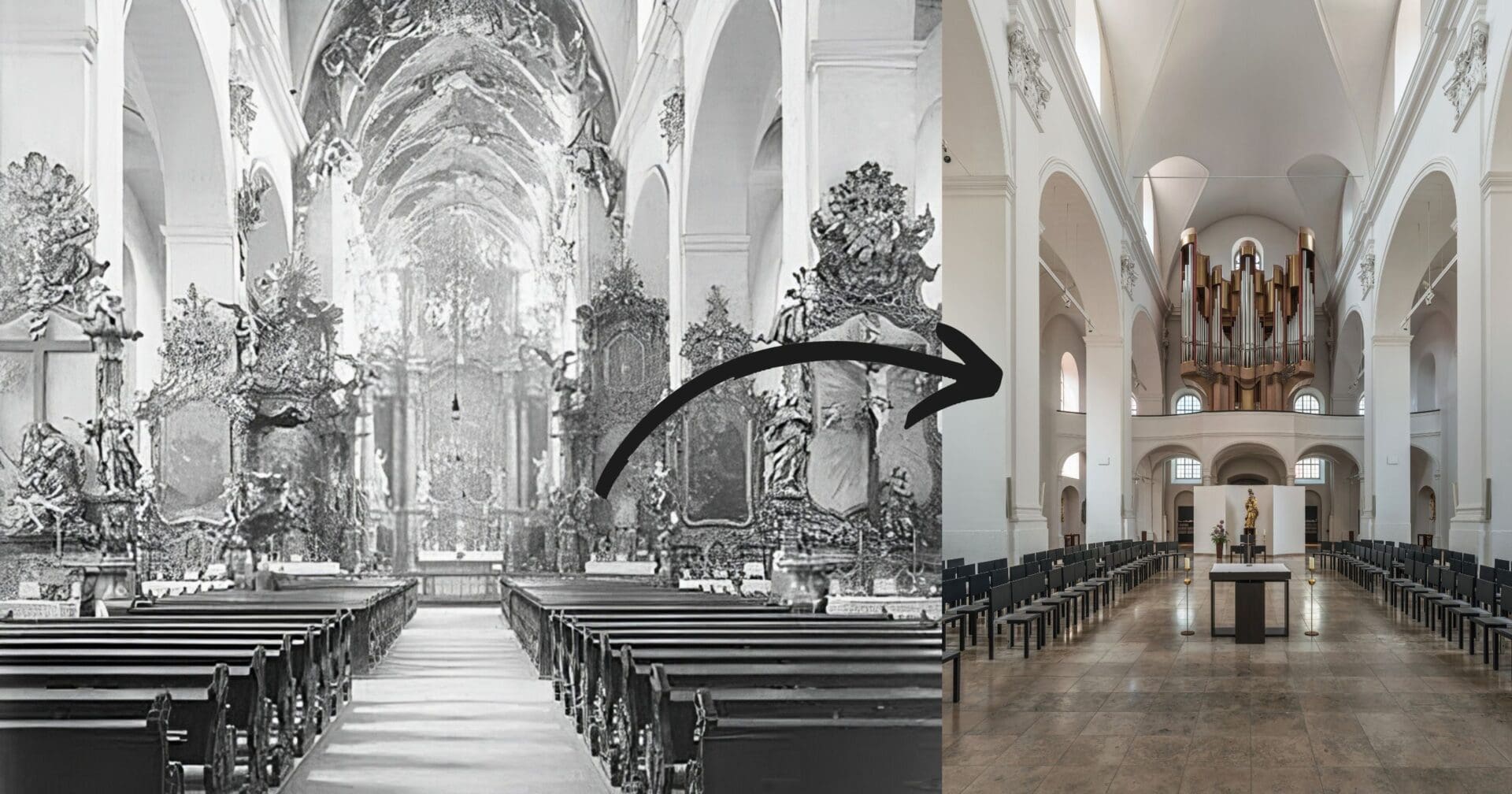In the wake of Vatican II, a significant shift in Catholic Church architecture emerged, leading to a phenomenon some critics dub “wreckovation.”
This term blends “wreck” and “renovation,” critiquing the post-council changes seen as detrimental to the sacredness of Catholic spaces.
Vatican II, a council that sought to modernize the Church’s approach and practices, inadvertently spurred changes in church architecture aimed at fostering a communal worship atmosphere. This shift saw traditional high altars replaced with tables positioned centrally, facilitating the priest’s interaction with the congregation, a move inspired by the desire to emphasize the communal meal aspect of Mass.
However, these architectural changes, including the removal of kneelers and statues, introduction of in-the-round seating, and the tabernacle’s relocation, have not been universally embraced. Critics argue that such renovations dilute the sense of the sacred, making some churches resemble theaters, airport terminals, or barns more than places of worship. They lament the iconoclastic nature of these updates, suggesting a drift toward Protestant aesthetics rather than preserving Catholic identity.
Despite these criticisms, proponents of the renovations argue they are in line with Vatican II’s vision for a more engaged and participatory congregation.
Pope Benedict XVI’s efforts to “reform the reform” indicate the contentious nature of these changes, underscoring a desire to realign with the Council’s intentions without compromising the Church’s sacred heritage.
Today, “wreckovation” continues to be a focal point for discussions on how best to embody the spirit of the liturgy in church architecture.
Photo credit: DXR via Wikimedia Commons, CC-BY-NC-SA via Kreuz.net (retrieved on archive.org) | Sources: 1, 2, 3, 4 via Wikimedia Commons
















